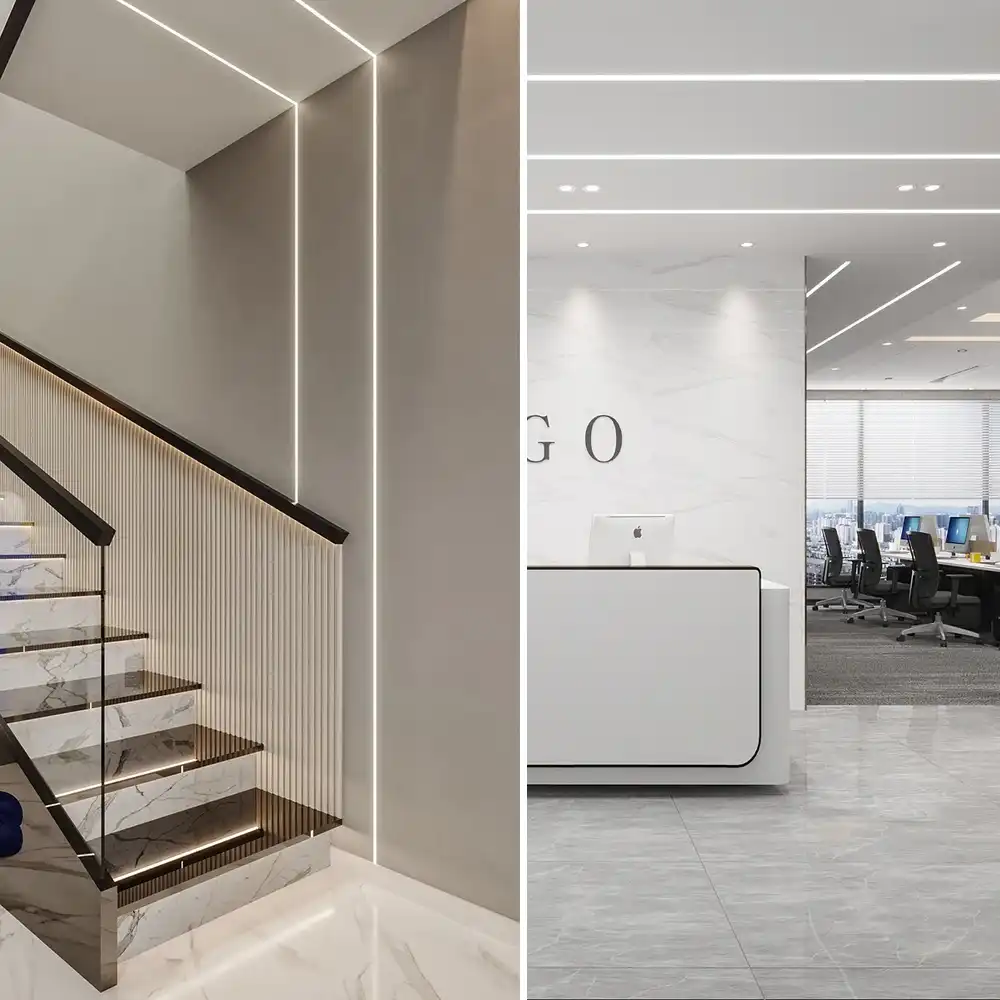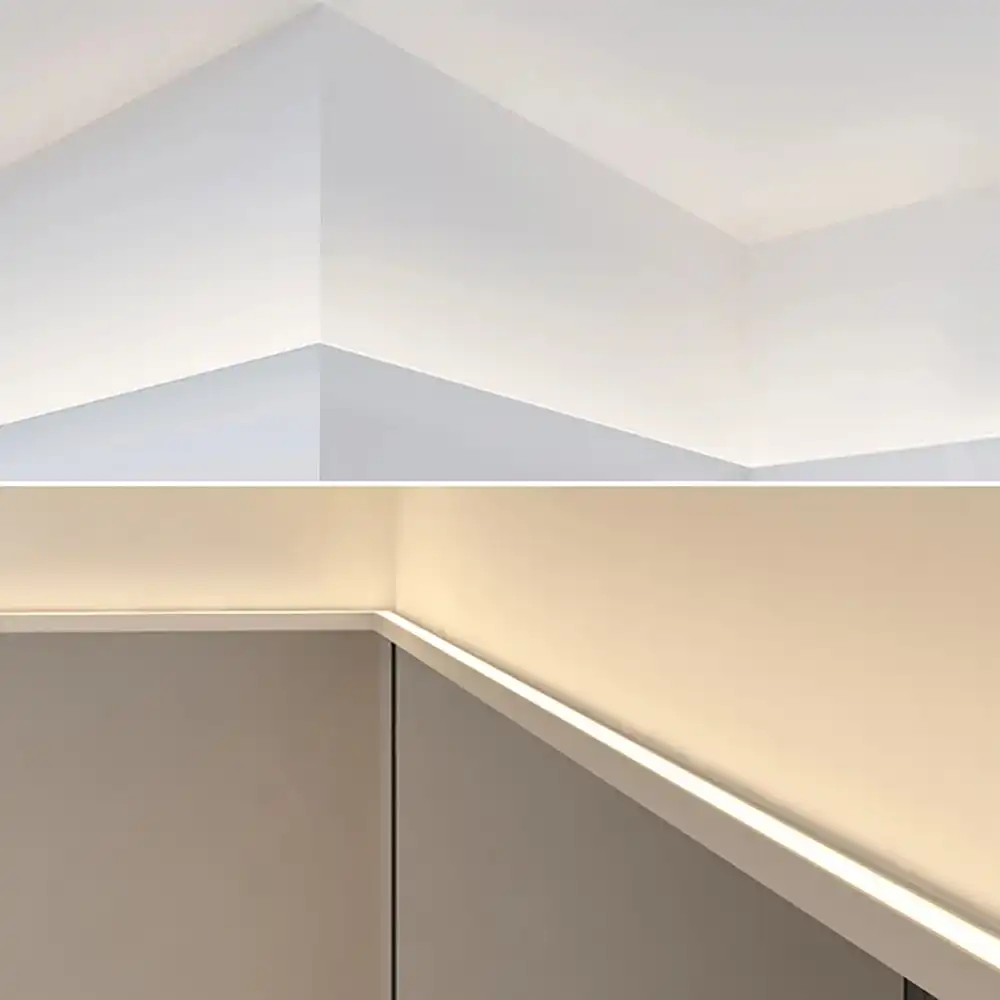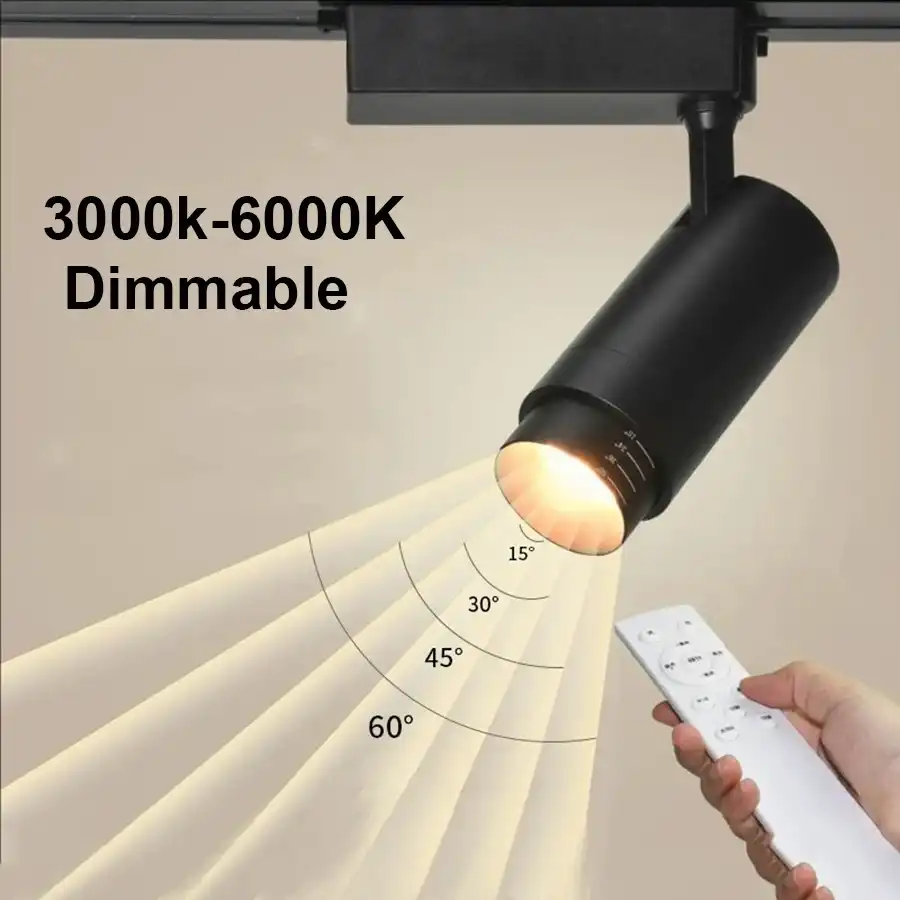Slim Profile LED Strip Lighting: Features and Benefits
Slim profile LED strip lighting has revolutionized the way we illuminate spaces, offering a versatile and energy-efficient solution for both residential and commercial applications. These innovative lighting systems are characterized by their thin, flexible design, allowing for seamless integration into various architectural elements and decor styles.
Key Features of Slim Profile LED Strip Lighting
Slim profile LED strips are distinguished by their remarkably thin form factor, typically measuring just a few millimeters in thickness. This slender design enables them to be installed in tight spaces where traditional lighting fixtures would be impractical or impossible to fit. The flexibility of these strips allows for creative applications, including curved surfaces and intricate designs.
Moreover, these LED strips often boast impressive luminous efficacy, producing bright, uniform illumination while consuming minimal power. Many models offer customizable color temperatures and RGB options, allowing users to create the perfect ambiance for any setting. The longevity of LED technology also ensures that these lighting solutions remain operational for extended periods, reducing the need for frequent replacements.
Benefits of Choosing Slim Profile LED Strip Lighting
The adoption of slim profile LED strip lighting brings numerous advantages to both residential and commercial spaces. Energy efficiency stands out as a primary benefit, with LED technology consuming significantly less power compared to traditional lighting sources. This translates to lower electricity bills and a reduced carbon footprint, aligning with sustainability goals.
The versatility of these lighting systems is unparalleled. They can be used for task lighting, accent lighting, or general illumination, adapting to various needs within a single space. The low profile nature of the strips makes them ideal for creating hidden lighting effects, such as under-cabinet illumination in kitchens or cove lighting in living rooms.
Installation flexibility is another key advantage. Slim profile LED strips can be easily cut to size and connected, allowing for customized lighting solutions that fit perfectly into any space. This adaptability makes them a favorite among designers and DIY enthusiasts alike, enabling creative lighting designs that were previously challenging to achieve.

Essential Steps for Effective Installation of Slim Profile LED Strip Lighting
The installation process for slim profile LED strip lighting requires attention to detail and careful execution to ensure optimal performance and longevity. By following these essential steps, you can achieve a professional-looking installation that enhances the aesthetic appeal and functionality of your space.
Planning and Preparation
Before beginning the installation, it's crucial to develop a comprehensive plan. Start by determining the exact locations where you want to install the LED strips. Consider factors such as power source availability, desired lighting effects, and potential obstacles that might affect the installation.
Measure the installation areas carefully, accounting for corners, curves, and any cuts that may be necessary. It's advisable to create a sketch or diagram of your lighting plan, noting the lengths of LED strips required and the positions of power supplies and controllers.
Gather all necessary tools and materials before starting. This typically includes:
- LED strip lights
- Power supply unit
- Controller (if using dimmable or color-changing strips)
- Mounting clips or adhesive tape
- Wire strippers and connectors
- Scissors or a sharp utility knife
- Measuring tape
- Clean cloth and isopropyl alcohol for surface preparation
Cutting and Connecting LED Strips
Slim profile LED strips can usually be cut to custom lengths, but it's essential to cut only at designated points marked on the strip. These cut points are typically indicated by scissor icons or copper pads spaced at regular intervals along the strip.
When cutting, use sharp scissors or a utility knife, and make clean, straight cuts to avoid damaging the circuitry. If you need to join sections of LED strip, use appropriate connectors or solder the connections for a secure and reliable installation.
For longer runs or installations that require multiple power injection points, be mindful of voltage drop. This phenomenon can cause dimming or color inconsistency towards the end of long LED strips. To mitigate this, consider using parallel wiring configurations or installing additional power supplies at strategic points.
Mounting and Securing LED Strips
The method of mounting your slim profile LED strips will depend on the surface and the specific product you're using. Many LED strips come with an adhesive backing for easy installation. If using adhesive-backed strips:
- Peel off the protective layer to expose the adhesive.
- Carefully align the strip with your planned installation path.
- Press the strip firmly onto the surface, working from one end to the other to avoid air bubbles or uneven adhesion.
For more secure installations or on challenging surfaces, consider using mounting clips. These clips can be screwed or adhered to the surface, providing a secure channel for the LED strip to snap into. This method is particularly useful for ceiling installations or areas where the adhesive backing might not provide sufficient long-term hold.

Maximizing Performance and Longevity of Your Slim Profile LED Strip Lighting
To ensure that your slim profile LED strip lighting continues to perform optimally over time, it's important to consider several factors beyond the initial installation. Proper maintenance, strategic placement, and thoughtful integration with your existing decor can significantly enhance the effectiveness and lifespan of your lighting system.
Optimal Placement for Enhanced Illumination
The positioning of your slim profile LED strips plays a crucial role in achieving the desired lighting effect. Consider the following strategies for optimal placement:
- Indirect Lighting: Install strips in coves, under cabinets, or behind furniture to create a soft, diffused glow that adds depth and ambiance to a room.
- Task Lighting: Position strips under kitchen cabinets or above work areas to provide focused illumination for specific tasks.
- Accent Lighting: Use LED strips to highlight architectural features, artwork, or display items by placing them strategically to draw attention to these elements.
- Backlighting: Create a captivating visual effect by installing LED strips behind televisions, mirrors, or headboards to produce a halo of light.
Integrating with Smart Home Systems
To maximize the functionality of your slim profile LED strip lighting, consider integrating it with smart home systems. Many modern LED strips are compatible with popular smart home platforms, allowing for advanced control options:
- Voice Control: Connect your LED strips to voice assistants like Amazon Alexa or Google Home for hands-free operation.
- Smartphone Apps: Use dedicated apps to adjust brightness, color, and create custom lighting scenes from your mobile device.
- Automated Schedules: Set your lights to turn on or off at specific times, or in response to sunrise and sunset.
- Motion Sensors: Integrate motion detection to automatically illuminate areas as you enter, enhancing both convenience and energy efficiency.
Maintenance and Troubleshooting
While LED strip lighting is known for its longevity, proper maintenance can further extend its lifespan and ensure consistent performance:
- Regular Cleaning: Dust and debris can accumulate on LED strips, especially in open installations. Gently clean the strips with a soft, dry cloth periodically to maintain optimal light output.
- Heat Management: Ensure that your LED strips have adequate ventilation to prevent overheating. If using in enclosed spaces, consider strips with lower wattage or install additional heat sinking measures.
- Connection Checks: Periodically inspect connections between strip segments and power supplies to ensure they remain secure and free from corrosion.
- Dimming Issues: If you notice flickering or inconsistent dimming, it may be due to incompatibility between the LED strips and the dimmer. Ensure you're using a compatible LED dimmer and power supply.
- Color Consistency: For RGB or tunable white strips, occasionally run through the full color spectrum to maintain even phosphor distribution and color consistency.

Conclusion
Slim profile LED strip lighting offers a versatile and energy-efficient solution for enhancing the ambiance and functionality of any space. By following the guidelines outlined in this article, you can ensure a successful installation that maximizes the benefits of this innovative lighting technology. Remember to plan carefully, choose the right products for your needs, and pay attention to details during installation. With proper care and maintenance, your slim profile LED strip lighting will provide long-lasting, customizable illumination that transforms your environment.
FAQ
How long do slim profile LED strip lights typically last?
High-quality LED strip lights can last up to 50,000 hours or more, which translates to over 5 years of continuous use.
Can I cut LED strip lights to fit my space?
Yes, most LED strip lights can be cut at designated points marked on the strip. Always refer to the manufacturer's instructions for specific cutting guidelines.
Are slim profile LED strip lights energy-efficient?
Yes, LED technology is highly energy-efficient, consuming significantly less power than traditional lighting options while providing equivalent or superior illumination.
Experience the Brilliance of Slim Profile LED Strip Lighting | USKYLED
At USKYLED, we specialize in delivering cutting-edge slim profile LED strip lighting solutions that combine advanced technology with sleek design. Our factory produces high-quality, energy-efficient LED products tailored to meet diverse lighting needs. From residential applications to commercial projects, our expert team is dedicated to providing innovative lighting solutions that transform spaces. Experience the USKYLED difference – contact our sales team at sales@uskyled.com to explore our range of slim profile LED strip lighting options and custom manufacturing capabilities.
References
1. Johnson, E. (2022). "The Complete Guide to Slim Profile LED Strip Lighting Installation". Lighting Design Quarterly, 45(2), 78-92.
2. Smith, A. & Brown, T. (2021). "Energy Efficiency in Modern Lighting: A Focus on Slim Profile LED Strips". Journal of Sustainable Lighting, 18(3), 205-220.
3. Lee, S. (2023). "Innovative Applications of Slim Profile LED Strip Lighting in Interior Design". Architectural Lighting Review, 37(1), 42-56.
4. Williams, R. (2022). "Smart Home Integration: Maximizing the Potential of LED Strip Lighting". Home Automation Technology, 29(4), 112-128.
5. Chen, L. & Wang, H. (2023). "Longevity and Maintenance of LED Strip Lighting Systems: Best Practices and Troubleshooting". IEEE Transactions on Consumer Electronics, 69(2), 187-201.



![What is Dimmable Track Lighting for Museum: Best Guide [2025]](/icms/upload/0d08cc601e7611f0b542b3ca0c0f4a83/pic/knowledgemanager-knowledgepic/e7879f32605f11f081911f363b8c1ed0/Directory/20250717 dimmable track lighting -1(1)_1752739217941.webp)

